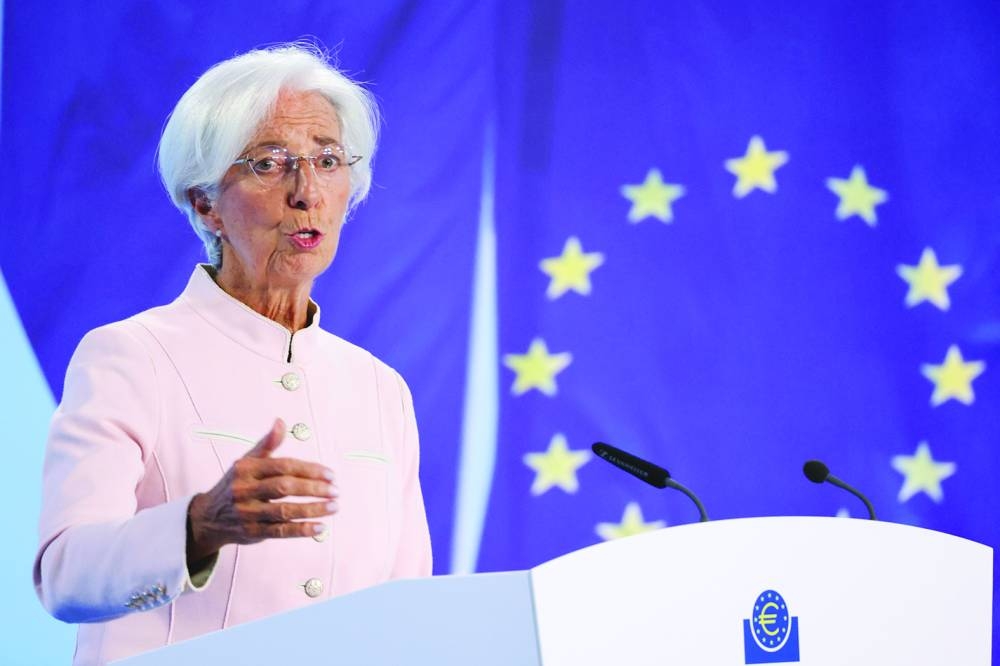European Central Bank (ECB) President Christine Lagarde insists that interest-rate cuts aren’t something being considered by policymakers, yet investors are already betting on them.
It was “not even a word that we have pronounced,” she told reporters on Thursday after the bank delivered its 10th straight interest-rate increase and repeated it will keep borrowing costs at sufficiently restrictive levels for as long as necessary.
As Lagarde spoke, the market moved to price in around three quarter-point cuts in 2024, with the first seen as early as June. Analysts at Citigroup Inc and Barclays Plc expect a whole percentage point of easing.
This isn’t the first time traders and the ECB are at odds. But pitted against Lagarde’s explicit signalling, the moves capture disparity between what policymakers and investors consider to be the appropriate response to Europe’s mix of lacklustre growth and above-target inflation.
“I don’t see ECB liking the expected easing that is priced by markets,” said Piet Christiansen, chief strategist at Danske Bank AS, whose base-case scenario is three cuts next year.
The rift sets the market up for potential jawboning from officials — who may be looking to get the market back in line — when they hit the road again yesterday. Tight financing conditions are seen as a prerequisite to reduce inflation further, which as of August was running at 5.3%.
While hawkish officials could still push for another hike this year, two ECB members — Vice President Luis de Guindos and Estonian central bank Governor Madis Muller — said Friday maintaining interest rates at 4% for a prolonged period may be sufficient to tame inflation.
Markets, however, remained focused on the increasingly bleak growth outlook, which is weighing on the euro. The common currency is poised for a record ninth weekly drop against the dollar, down 0.3% this week to trade near a six-month low around $1.067.
Money managers polled by Bloomberg are in near-universal agreement, pointing to a fresh raft of gloomy economic forecasts that mean further hikes would pile on more pain.
“We continue to expect macro outcomes — both growth and inflation — to come in below ECB expectations and as such we do view this as the peak in policy rates,” ABN Amro analysts Nick Kounis and Aline Schuiling wrote in a note. “We expect the central bank to pivot toward rate cuts next year.”
Of course, the jury is still out. European price pressures may prove more persistent than expected and traders may fall into line. And even if cuts start in June as traders and most economists expect, the ECB will have held rates at their peak for the longest period in its history — the current record is seven months.
The pricing for 2024 cuts is “too aggressive for us,” said Theophile Legrand, a strategist at Natixis. “Rates will stay higher for longer.”
Yet markets got ahead of the ECB’s messaging on rate hikes on the way up and now they’re looking to do the same on the way down. Either way, it’s a communication dilemma for ECB officials with money markets putting only one-in-five odds on a further hike by year-end.
“The next challenge could be to lean against rate cuts expectations,” said Frederik Ducrozet, head of macro-economic research at Banque Pictet & Cie SA. If the “economic slowdown remains orderly” then “they will resist the pressure to cut for longer.”

Christine Lagarde, president of the European Central Bank.
